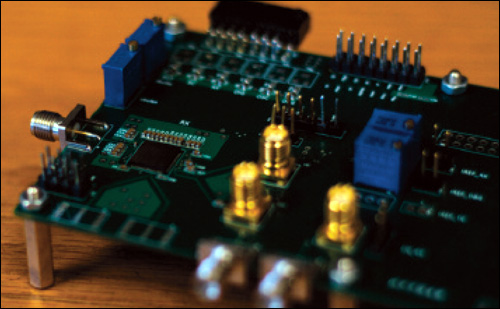Oct 14, 2013Most homeless people don't have iPhones and can't ask Siri to remind them about upcoming appointments with doctors, social workers or housing agencies. They don't carry laptops with Outlook, so they often miss critical meetings that could help improve the quality of their lives. Now, a group of researchers that have come together under the name Patchworks has developed a radio frequency identification-based system to remind the indigent when they have appointments.
The Patchworks project is the brainchild of Rod Dillon, a medical biologist at Lancaster University, in the United Kingdom. It includes Signpost, a charity focused on helping the homeless, and MadLab, a group of innovators who share and experiment with inexpensive open-source technology. The idea was to bring together researchers with those working in local communities to find ways to use cheap technology to make people's lives better.

The Patchworks team, with funding from the Engineering and Physical Sciences Research Council via the U.K. Catalyst Hub research project, developed a prototype for "PAT," or Personal Appointment Ticketing service. It's intended to enable homeless people living transient lives to track their appointments with the swipe of an RFID-enabled wristband or card. The PAT device then prints out a personalized reminder list of appointment dates, times and places.
The team developed a shoebox-size device that contains a Raspberry Pi low-cost computer, an RFID reader and a small printer, similar to that in an electronic cash register. The reader and printer are connected to the computer via a USB hub, and the entire device can be battery-powered.
The concept is that each homeless person would receive a wristband or card with an RFID transponder storing a unique ID. The ID would be linked to the individual only in a Signpost caseworker's database. No personally identifiable information would be stored on the chip, for security and privacy reasons.
The idea is to position a number of PAT devices in a city or town that are accessible 24/7. When a user brings his or her RFID-enabled wristband or card close to the PAT device, the reader would interrogate the tag, and then the computer would connect via a Wi-Fi, cellular or wired network to a Signpost server and retrieve appointments for that user. PAT would then print a ticket detailing the person's appointments.
"We looked into biometric ways of identifying people, but RFID was a quick and low-cost way of creating the prototype," says Will Simm, a senior research associate at Lancaster University. "Plus, we had the aim of minimizing the cost of deployment of PAT boxes, and RFID matched this requirement." If the low-cost chip is lost, another can be issued easily.
Now that Patchworks has developed a prototype, the project is being continued by a consortium of agencies that has attracted funding for a broader public-information project. "Those agencies plan to integrate PAT into their larger project," Simm says. "And other agencies in the United Kingdom have shown keen interest in the PAT device as a public-information service, allowing those not connected to the Internet or not carrying a smartphone to access personalized information in a form they can carry and update easily."
Photo: OURUS
